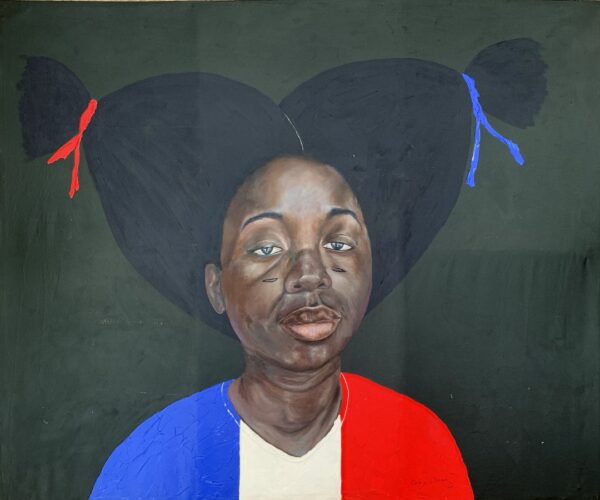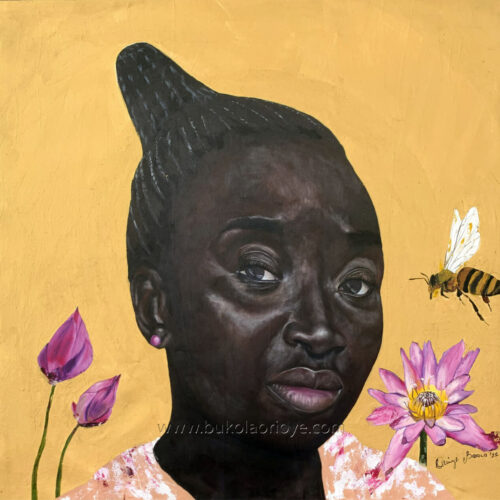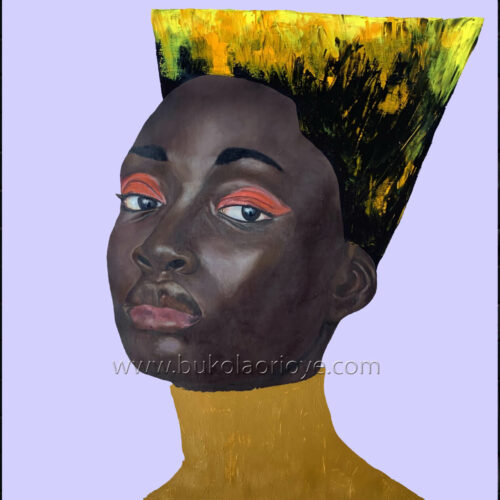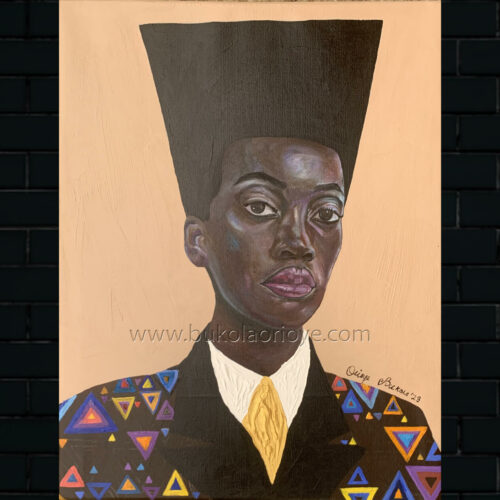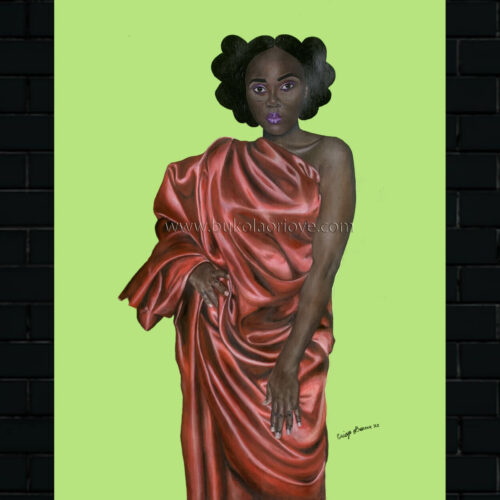Outlaw presents a striking confrontation between individuality and imposed identity. The central figure gazes outward with quiet defiance; neither pleading nor yielding, embodying the tension between belonging and resistance. Her voluminous hair, shaped into twin forms bound by red and blue ribbons, echoes both wings and restraints, symbols of freedom and control. Draped in colours that recall flag and flesh, she becomes a living metaphor for those who exist between definitions at once celebrated and condemned.
Through bold contrasts and meticulous realism, Bukola Orioye reimagines the “outlaw” not as a criminal, but as a truth-teller — someone who refuses to conform to narrow expectations of appearance, gender, or nationhood. Outlaw becomes a portrait of courage in selfhood, a meditation on beauty that transcends compliance, and an ode to the human spirit’s refusal to be confined.

